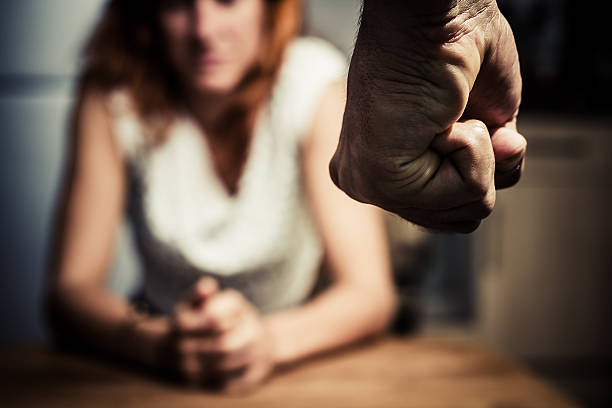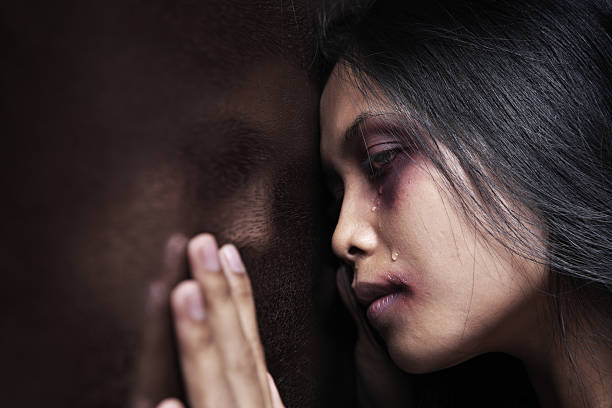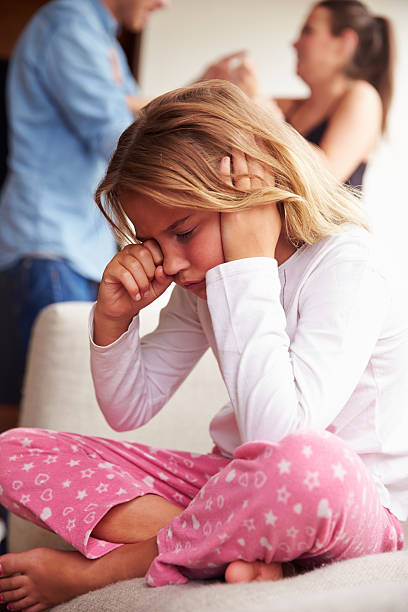
When one man beats his wife, it is interpersonal violence, but when a million men beat their wives, it is structural violence. Something within society is perpetuating or unconsciously condoning domestic abuse. In the United States the number of families where domestic violence is present is estimated to be around 10 million. For many women, home is the most unsafe place they can be.
Would it surprise you to know that men in prison are less likely to be raped than the average woman in a relationship? The probability of being raped in prison has been estimated to be anywhere from 4-7% while nearly 10% of women have reported being raped by an intimate partner. “I had no choice but to submit to being [a] wife. Out of fear for my life, I submitted to sucking his d**k, being f****d in my ass, and performing other duties as a woman, such as making his bed. In all reality, I was his slave.” The quote below illustrates the shared experience of women who are domestically abused and male rape in prison.
According to the Centers for Disease Control (CDC) 1 in 4 women have experienced physical violence from an intimate partner. Emotional abuse exists in almost all relationships that display physical violence. Verbal abuse, withholding access to food, medication, or money, threatening family members, stalking are all common practices of an abuser. Rape, sexual abuse, and sexual humiliation are common in relationships where intimate partner violence occurs.
 Many professionals explore the dynamics of interpersonal violence and speculate the reasons abusers abuse their partners. The theory is that abusers may feel a need to control their partner because of low self-esteem, extreme jealousy, use of drugs or alcohol, difficulties in regulating anger, or feeling inferior to their partner in education and socioeconomic standing (their female partner is smarter and/or more successful than they are). Conversely, women stay with abusers because they have low self-esteem, have been raised or conditioned to tolerate abuse, naively believe their partner will change, or are caught up in the cycle of relationship violence. Violence against woman has been present in society since times immemorial. Calling it “domestic” violence perpetuates the notion that the violence is an interpersonal issue between two dysfunctional people. Reframing domestic abuse and intimate partner violence as patriarchal violence more accurately explains the roles of sexist ideology and male domination in the pervasiveness of violence against woman.
Many professionals explore the dynamics of interpersonal violence and speculate the reasons abusers abuse their partners. The theory is that abusers may feel a need to control their partner because of low self-esteem, extreme jealousy, use of drugs or alcohol, difficulties in regulating anger, or feeling inferior to their partner in education and socioeconomic standing (their female partner is smarter and/or more successful than they are). Conversely, women stay with abusers because they have low self-esteem, have been raised or conditioned to tolerate abuse, naively believe their partner will change, or are caught up in the cycle of relationship violence. Violence against woman has been present in society since times immemorial. Calling it “domestic” violence perpetuates the notion that the violence is an interpersonal issue between two dysfunctional people. Reframing domestic abuse and intimate partner violence as patriarchal violence more accurately explains the roles of sexist ideology and male domination in the pervasiveness of violence against woman.
Why Doesn’t She Just Leave?
 Structural gender inequality imposes to many barriers for women when they try to leave abusive relationships. Despite the general sentiment that women should leave their abusers, they are actually at an increased risk for violence after they leave or attempt to leave. Women are 70 times more likely to be killed in the two weeks after leaving than at any other time during the relationship. Nearly half of all women who are murdered die at the hands of their current or former partners. In 70-80% of intimate partner homicides, no matter which partner was killed, the man physically abused the woman before the murder. The courts and the police offer little protection. The most common response to domestic violence by the police and the courts is a restraining order, or a protective order; a document that identifies the perpetrator as a potential threat to one victim (not to society in general) and instructs the abuser to have no physical or verbal contact with the victim Though the information is inconclusive, 11% -25% of woman (depending on the study) had active restraining orders at the time of their murder. Though there is some evidence of long-term benefit to a restraining order, initially there is a 21% chance of an escalation in violent behavior after an order of protection is issued. What we do know conclusively about restraining orders is that they can’t guarantee safety as much as putting the perpetrator in jail. Less than 2% of abusers ever receive any jail time.
Structural gender inequality imposes to many barriers for women when they try to leave abusive relationships. Despite the general sentiment that women should leave their abusers, they are actually at an increased risk for violence after they leave or attempt to leave. Women are 70 times more likely to be killed in the two weeks after leaving than at any other time during the relationship. Nearly half of all women who are murdered die at the hands of their current or former partners. In 70-80% of intimate partner homicides, no matter which partner was killed, the man physically abused the woman before the murder. The courts and the police offer little protection. The most common response to domestic violence by the police and the courts is a restraining order, or a protective order; a document that identifies the perpetrator as a potential threat to one victim (not to society in general) and instructs the abuser to have no physical or verbal contact with the victim Though the information is inconclusive, 11% -25% of woman (depending on the study) had active restraining orders at the time of their murder. Though there is some evidence of long-term benefit to a restraining order, initially there is a 21% chance of an escalation in violent behavior after an order of protection is issued. What we do know conclusively about restraining orders is that they can’t guarantee safety as much as putting the perpetrator in jail. Less than 2% of abusers ever receive any jail time.
In many cases, there are very few places women can go that ensure family safety. Single women with children are more likely to live in poverty under normal circumstances but add the complications that domestic abuse may bring (lack of access to bank accounts, inconsistent work histories, fear of requesting child support, complex post-traumatic stress disorder) make the realities of leaving almost impossible. Half of all homeless women and children in the US are fleeing domestic violence. Though domestic abuse shelters are a temporary option for many women and children, women still fear retaliation from their abusers and consequences from the system; a system heavily steeped in patriarchy (a system of society or government in which men hold the power and women are largely excluded from it).
Gender inequality and reinforcement of patriarchal ideology is demonstrated with the treatment of domestic violence victims by the police, the family and criminal courts, and child protective services. Often women who seek protection from their abusers are at risk for losing their children. Many states have policies that punish women for failing to protect their children when they live in homes with domestic violence. The women can be held responsible by Child Protective Services (CPS) for subjecting their children to witnessing domestic abuse, even when they are the victims of the abuse. This extreme scenario of victim blaming accepts the notion that women are equally responsible for the violence because of the fact they are not leaving their abusers. To add further insult to injury, though CPS guidelines vary by state, parents can be charged with neglect when children are living in poverty. A mother’s decision to leave an abusive spouse, which results in her child living in homelessness and poverty, puts her at risk for having her children taken from her.
 Many women stay in abusive relationships to protect their children from abuse. An estimated overlap of 30-50% between spousal abuse and child abuse (men who abuse their partners are more likely to abuse their children), yet despite this, many abusers are successful in getting unsupervised access and unrestricted custody of their children. A 2012 report by the American Judges Association states that, “batterers have been able to convince authorities that the victim is unfit or undeserving of sole custody in approximately 70% of challenged cases.” Researchers speculate that men who are abusive to their partners typically have parenting styles that have detrimental impact on children as well. Family courts tend to downplay or ignore the abuser tendencies of the father and accept the believe that the domestic violence is an unhealthy pattern between both parents. Courts tend to overlook a father’s history of spousal abuse and will applaud what they see as a positive attribute- their interest in being a part of the child’s life. Abuse survivors recognize this interest for what it is; an attempt to retain control over their victim by using their children.
Many women stay in abusive relationships to protect their children from abuse. An estimated overlap of 30-50% between spousal abuse and child abuse (men who abuse their partners are more likely to abuse their children), yet despite this, many abusers are successful in getting unsupervised access and unrestricted custody of their children. A 2012 report by the American Judges Association states that, “batterers have been able to convince authorities that the victim is unfit or undeserving of sole custody in approximately 70% of challenged cases.” Researchers speculate that men who are abusive to their partners typically have parenting styles that have detrimental impact on children as well. Family courts tend to downplay or ignore the abuser tendencies of the father and accept the believe that the domestic violence is an unhealthy pattern between both parents. Courts tend to overlook a father’s history of spousal abuse and will applaud what they see as a positive attribute- their interest in being a part of the child’s life. Abuse survivors recognize this interest for what it is; an attempt to retain control over their victim by using their children.
The conversation about Domestic Violence must be elevated from “why doesn’t she leave” to “what are we doing to perpetuate and tolerate objectification and subordination of women?” It has been consistently demonstrated that men who accept very patriarchal beliefs about gender roles have a higher likelihood of engaging in violence against women. To resist patriarchal ideology we all, men and women, need to explore our beliefs and actions to bring consciousness to what we are doing to condone toxic masculinity, male privilege, and gender inequality. Toxic masculinity is what can come of teaching boys that they can’t express emotion openly, that they must be tough and can gain power through physical strength, that being like a “girl” means they are weak and inferior. Gender violence has its roots in the socialization of men to be more powerful than women and that they are taught to gain power by dominating others. Toxic masculinity hurts everyone, including boys. Rigid traditional gender stereotypes prevent male victims of sexual assault to come forward, men who are in domestically abusive situations to seek help (1 in 7 men have experienced physical violence from a male or female partner) and has been linked to adult male depression and substance abuse. The perpetrator and the victim are both a symptom of the larger problem, patriarchy and gender inequality.





Join the Conversation